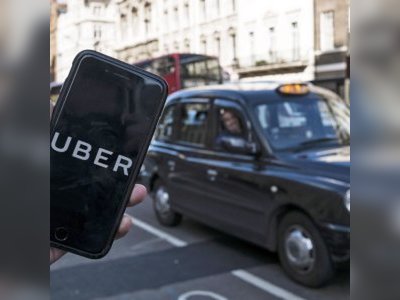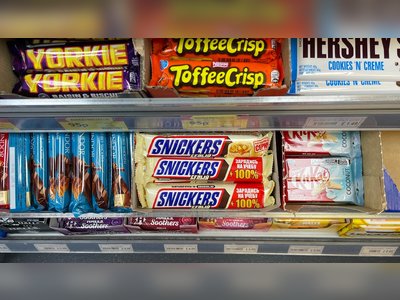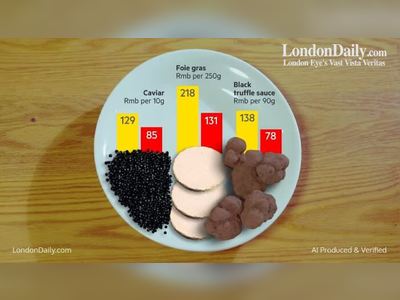How Chinese fashion brands can achieve global domination and stop being ignored in the West
A therapist could describe fashion’s relationship with China as codependent.
Almost every luxury brand on the planet relies on China’s shoppers to pay their bills, meaning designers are heavily invested in the country. Meanwhile, China’s cheap apparel manufacturing has long allowed foreign brands to produce high-quality, well-made goods at half the price they were before.
Even Trump’s trade war hasn’t made much of a dent in China’s role as the beating heart of the apparel manufacturing supply chain. China buys, produces and exports most of the world’s clothing – but somehow, we are still wearing clothes designed in the US, Europe, Japan and even Korea. This begs the question: why are Chinese brands still struggling to find the spotlight?
Most Western consumers would be hard pressed to name a Chinese fashion brand. The gap between “Made in China” and “Created in China” still hasn’t been bridged and Shanghai Fashion Week languishes behind its equivalents in Copenhagen, Seoul, Tblisi and Tokyo. This is partly because there is still a stigma attached to Chinese goods, one that is only slowing lifting.
Xiaofeng Gu, a fashion marketing expert living between San Francisco and Shanghai, believes the absence of Chinese designers from the global fashion stage comes down to a combination of complacency and high cultural barriers.
“China’s domestic market is so big that many brands are simply not motivated to make a global expansion,” he says. “Marketing to Western audiences is another challenge – I have seen a few shows staged by Chinese fashion brands at major fashion weeks and while they often have amazing artistry and creativity, they lack storytelling. Helping an international audience understand the cultural references and craftsmanship behind your work is the first step toward that success.”
Vito Plantamura brought a number of Chinese designers to Italy for Pitti Immagine Uomo, an international fashion fair for men’s clothing. He argues that some of the success Japanese, Korean and even Georgian labels have enjoyed is thanks to their ability to take trends born in Europe and mould them into something new and exciting.
“Many of the [Chinese] designers I approached had studied in England and France and were technically very good, but they didn’t have a strong Chinese identity,” he says. “They were just following the mainstream – but to do well, you need to have a personal touch and put your culture and your origins into your work.”
Young Chinese-American designers are using their heritage more successfully, and being playful with stereotypes around their roots. Sandy Liang’s spring/summer 2019 collection in New York was shown alongside a visual feast of traditional Cantonese fare at her father’s restaurant, Congee Village. New Zealand-born Claudia Li, meanwhile, cast an all-Asian catwalk for her show in New York to illustrate the need for diversity.
But while the tide of successful Asian-American designers – Derek Lam, Thakoon, Phillip Lim, Vera Wang and Alexander Wang, to name a few – has never ebbed, Chinese fashion brands born in mainland China are still considered niche in the US and Europe.
“They are still largely the preserve of the fashion crowd, yes, but the proliferation of online luxury shopping is helping to gain visibility for up-and-coming labels among a wider global audience,” says Elizabeth Flora, the Asia editor for research firm Gartner. “We have seen Chinese luxury fashion designers like Huishan Zhang turning up on sites like Farfetch, while Opening Ceremony is known for sending its buyers to Shanghai Fashion Week and stocking emerging Chinese labels.”
Huishan Zhang is rapidly becoming a glittering name in China, but one of the biggest problems many of his peers face is that the country has never been particularly interested in its own brands. Until very recently, luxury shoppers generally slavered over brands from Paris, London and Milan – but eschewed anything made locally.
Then online cancel culture – the boycotting of celebrities or brands based on accusations spread online – started to grow. When fashion labels such as Versace, Coach and Givenchy became the target of China’s nationalistic youth, they saw their sales plummet.
“These incidents can have a long-term effect on foreign brands, particularly when they lose their Chinese brand ambassadors, which is a massive blow in the China market as celebrities tend to generate almost all of their social engagement,” Flora says. “Dolce & Gabbana’s [China] social media engagement in the first quarter of 2019 was down 98 per cent from the same time the previous year after its 2018 scandal [involving racist comments about Chinese people from Stefano Gabbana surfacing on Instagram].”
This, combined with a China-wide crackdown on corruption and ostentatious displays of wealth, has given Chinese brands the chance to fight for a slice of the pie. Digital platforms, meanwhile, have made it easier for them to compete against the bigger budgets of Western brands by allowing fashion-hungry Chinese consumers to more easily hunt down smaller labels from around the country.
Chinese designers are also receiving strong support from e-commerce sites such as Tmall, which organises international shows for its Tmall China Day at major fashion weeks around the world (Tmall is owned by Alibaba, which also owns the Post). Brands such as Li-Ning, Anta, Yaying, Exception, Erdos, Icicles and many others are now growing in popularity among a new generation of consumers.
“Gen Z shoppers are especially open to experimenting with new labels – they’re constantly following the brands their favourite celebrities and KOLs are wearing and discovering new brands across social channels, including Tmall and Red,” Flora says. “We’ve also seen Chinese brand-specific hashtags proliferate on Red; the ‘Chinese streetwear’ hashtag highlighting local streetwear brands is a good example.”
This new-found “cool factor” is seeing foreign fashion labels suddenly become more open to partnering with Chinese brands. Recent collaborations include Converse x Feng Chen Wang, H&M x Angel Chen, and Puma x Tyakasha.
Montblanc also recently teamed up with streetwear platform Yoho and Chinese footwear brand Bing Xu to create a limited-edition backpack for Shanghai’s Yo’Hood streetwear trade show – its hashtag received 1.8 million views after being promoted by celebrities and influencers such as Mr Bags.
These collaborations are primarily aimed at a young, fashionable Chinese audience who want to buy home-grown fashion but still like the status of a foreign label.
“Fashion represents power,” says fashion author and journalist Christine Tsui. “All the major fashion capitals today are located in rich, powerful countries. Western people are finally starting to notice Chinese fashion because they see the country as becoming more powerful. Young Chinese consumers have always thought it was.”
Chinese brands already have all the tools they need to expand at home. But if they’re aiming for global domination, they’ll need to stop emulating the West and start telling their own story.






















